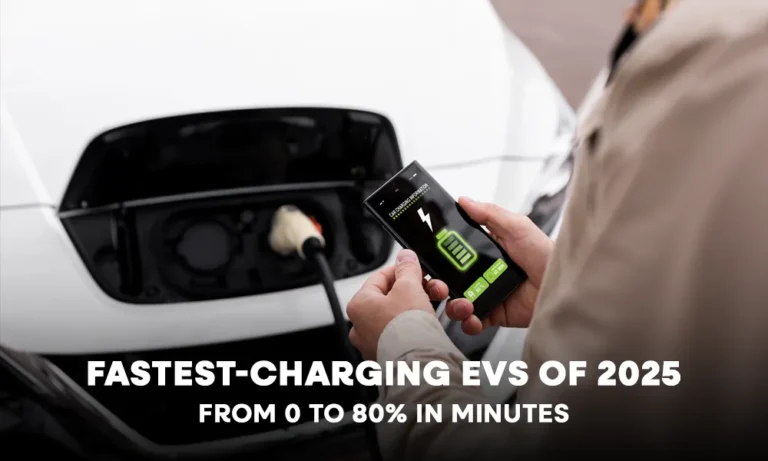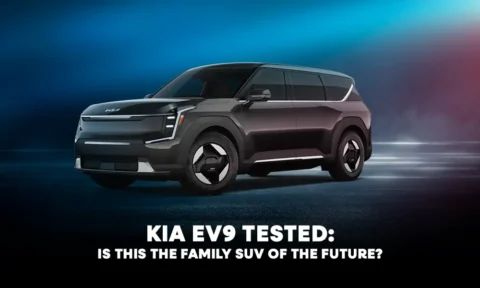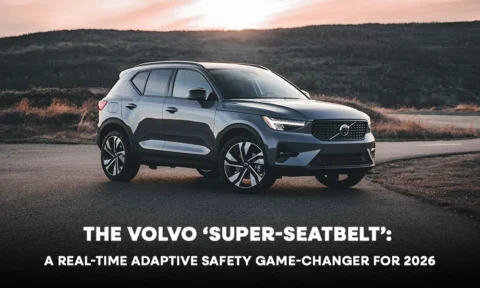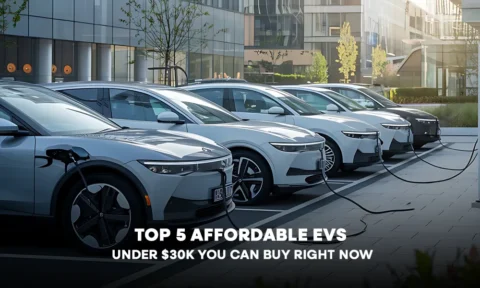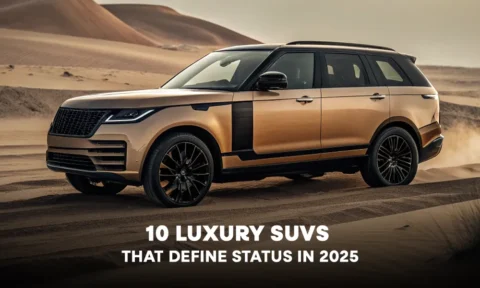The first time I saw an electric car go from nearly empty to 80% in under 15 minutes, it blew my mind! For a moment, I thought I was in a sci-fi movie or something! Charging my older EV generally involves long waits with snacking, browsing social media, and maybe even a nap thrown in. Fast forward to 2025, and charging an EV now happens faster than my morning latte!
Let’s take a spin through the EVs that are redefining what “quick stop” actually means in 2025—and the tech and brands making it happen.
What’s Under the Hood of Ultra-Fast Charging?
These charging speeds aren’t magic—they’re the result of serious engineering. Here’s what’s driving the revolution:
- High-Voltage Architectures (800V–1,000V): These reduce current flow, minimizing heat and allowing faster, safer charging.
- DC Fast Charging (350kW–1,000kW): Direct current bypasses the onboard converter, delivering power straight to the battery.
- Liquid-Cooled Charging Cables: These prevent overheating during high-power transfers, enabling thinner, more flexible cables.
- Advanced Battery Chemistries: Solid-state and high-density lithium-ion batteries accept charge faster and manage heat better.
- Smart Battery Management Systems (BMS): These optimize charging curves in real time, balancing speed with battery health.
I’ve broken it down in the table below, and added a column showing which brands are actually utilizing these charging innovations.
Quick Comparison Table
| Technology | Description | Brands Using It |
| 800V–1,000V Architectures | Higher voltage = lower current = faster, cooler charging | Porsche, Hyundai, Kia, Lotus, BYD |
| DC Fast Charging (350kW–1,000kW) | Direct current bypasses onboard converters for rapid energy transfer | Tesla, BYD, Porsche, Lotus, Kia |
| Liquid-Cooled Charging Cables | Prevent overheating during high-power transfers | Tesla, ABB, ChargePoint, BMW |
| Solid-State & High-Density Lithium Batteries | Faster charge acceptance and better thermal control | BYD, CATL (used in Chinese EVs), Porsche (experimental) |
| Smart Battery Management Systems (BMS) | Real-time optimization of voltage, current, and temperature | Tesla, Hyundai, Tata, BMW, Kia |
These technologies aren’t just specs. This is information you need to have when you decide to purchase an EV. It makes the difference between planning your day around your car and having your car fit seamlessly into your life.
EVs That Charge Like Lightning (and the Brands Behind Them)
BYD Han L & Tang L — The 5-Minute Phenoms
Charging speeds: Up to 1,000 kW
Range Added in 5 Minutes: ~248 miles
These two models employ BYD’s new ultra-fast charging tech, which is still in early deployment, but their in-house tests are jaw-dropping. These models could become the first to truly rival gas station pit stops.
Porsche Taycan (2025) — Luxury That Doesn’t Linger
Charging Speed: 320 kW
Charge Time: 10–80% in 18 minutes
Range Added: ~223 miles
The Taycan’s 800V system and Performance Battery Plus make it one of the fastest-charging luxury EVs. This is the EV for you if you want refined fast.
Lotus Eletre — SUV With Supercar Swagger
Charging Speed: 367 kW
Charge Time: 19 minutes
Range Added: ~244 miles
This one’s got a high average charging speed and a sleek design that screams “I don’t wait.” It’s proof that practicality and performance can share a garage.
Hyundai Ioniq 6 — Stylish, Smart, and Speedy
Charging Speed: 150 kW
Charge Time: 18 minutes
Range Added: ~146 miles
Thanks to its 800V architecture and multi-charging system, the Ioniq 6 punches above its weight. It’s the commuter’s dream—fast, affordable, and easy on the eyes.
Kia EV6 GT — Performance With a Purpose
Charging Speed: 263 kW
Charge Time: 17 minutes
Range Added: ~168 miles
Built on the same E-GMP platform as the Ioniq 6, the EV6 GT adds a sportier edge. It’s got the speed and the style to make even gas drivers jealous.
Tesla Model S Plaid+ (2025) — Still Setting the Pace
Charging Speed: 350 kW
Charge Time: ~15 minutes
Range Added: ~200 miles
Tesla’s upgraded 4680 cells and V4 Superchargers keep it at the top of the leaderboard. It’s not just fast—it’s efficiently fast.
Here’s a quick comparison of the fastest-charging EVs of 2025:
Brand-Wise Comparison Table
| Model | Charging Speeds | Full Charge Time | Range on Full Charge | Starting Price (USD) |
| BYD Han L / Tang L | Up to 1,000 kW | ~25–30 minutes | ~436 miles | ~$30,000 / ~32,700 (China only) |
| Porsche Taycan (2025) | 320 kW | ~22–25 minutes | ~318 miles | ~$99,400 / ~AED 416,500 |
| Lotus Eletre | 367 kW | ~25–28 minutes | ~373 miles | ~$229,900 / ~AED 550,000 |
| Hyundai Ioniq 6 | 150 kW | ~35–40 minutes | ~361 miles | ~$38,945 |
| Kia EV6 GT | 263 kW | ~30–35 minutes | ~310 miles | ~$44,395 / ~AED 230,000 |
| Tesla Model S Plaid+ | 350 kW | ~30 minutes | ~390 miles | ~$99,990 / ~AED 374,990 |
Note:
- Prices are approximate and vary by region and time.
- Ranges are based on manufacturer estimates or WLTP/CLTC ratings. Real-world mileage may vary based on driving conditions.
- Full charge times are based on optimal DC fast charging conditions and may vary depending on charger type, battery size, and ambient temperature.
Final Thoughts
Charging used to be a major problem before leading to long breaks in your journey. But in 2025 it’s come down to barely a short break. With EVs like the BYD Han L / Tang L, Porsche Taycan, Lotus Eletre, Hyundai Ioniq 6, Kia EV6 GT, and Tesla Model S Plaid+, in 2025 electric cars are narrowing the gap between gas cars.
If you’re still hesitating to go electric, maybe it’s time to stop thinking of EVs as a compromise. They’re quickly becoming the better option—faster, cleaner, quieter, and smarter.
To know more about automotive related news visit ask about cars now.


